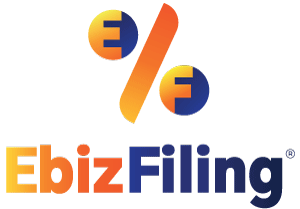
-
August 5, 2023
Legal Remedies Available to Taxpayers in Case of Disagreement with Scrutiny Assessment Findings
Introduction
Tax scrutiny assessments play a crucial role in ensuring compliance with tax laws and regulations. However, there are instances where taxpayers may find themselves in disagreement with the findings of such assessments. In such cases, it is essential for taxpayers to understand their rights and the legal remedies available to them. This article aims to explore the various avenues through which taxpayers can challenge scrutiny assessment findings, empowering them to protect their rights and seek resolution through the legal framework.
What are Scrutiny Assessments?
Scrutiny assessments are conducted by tax authorities to examine the accuracy and completeness of the taxpayer’s financial records and compliance with tax laws. These assessments are generally triggered when the tax authorities detect discrepancies or red flags in the taxpayer’s returns. During a scrutiny assessment, tax officers have the authority to examine books of accounts, conduct interviews, and gather relevant information to arrive at their findings.
What are the Grounds of Disagreement with Scrutiny Assessments?
Disagreements with scrutiny assessment findings can arise for various reasons. Here are some common grounds on which someone might disagree with scrutiny assessment findings:
-
Interpretation of the Law: Disagreements can occur when there is a difference in the interpretation of tax laws and regulations between the taxpayer and the tax authority. The taxpayer may argue that their interpretation of the law is valid and that the assessment findings do not align with their understanding.
-
Facts and Evidence: Disputes can arise if there are disagreements over the facts or evidence presented during the scrutiny assessment. The taxpayer may believe that the tax authority has misinterpreted or overlooked certain crucial facts or evidence that could impact the assessment findings.
-
Methodology and Calculations: Disagreements can also occur regarding the methodology used by the tax authority to calculate the tax liability. The taxpayer might question the accuracy or appropriateness of the calculations made by the tax authority, leading to disputes over the assessment findings.
-
Compliance with Procedures: Disagreements may arise if the taxpayer believes that the tax authority did not follow the appropriate procedures during the scrutiny assessment process. This could include issues such as failure to provide proper notice, insufficient opportunity for the taxpayer to respond or present their case, or procedural errors that could have influenced the assessment findings.
-
Precedents and Case Law: Disagreements can occur when there are conflicting interpretations of tax laws based on precedents and case law. The taxpayer might argue that previous court decisions or legal precedents support their position and contradict the assessment findings.
-
Administrative Errors: Disputes can arise if the taxpayer believes that the assessment findings are based on administrative errors or mistakes made by the tax authority. This could include errors in data entry, miscalculations, or misunderstandings of the taxpayer’s records or transactions.
-
Bias or Discrimination: In some cases, disagreements with assessment findings may be based on allegations of bias or discrimination by the tax authority. The taxpayer may claim that they were unfairly targeted or treated differently for personal or discriminatory reasons, rather than objective assessment of their tax liability.
What are the Legal Remedies Available to Taxpayers?
-
Filing an Appeal: Taxpayers have the right to challenge scrutiny assessment findings by filing an appeal before the appropriate appellate authority. The appeal must be filed within the prescribed time limit, generally 30 to 60 days from the date of receipt of the assessment order. The appellate authority, such as the Commissioner (Appeals) or the Income Tax Appellate Tribunal (ITAT), will review the assessment order, supporting documents, and arguments presented by both parties. The decision of the appellate authority can be further challenged in higher courts, such as the High Court or the Supreme Court.
-
Seeking Rectification: If there are factual errors or mistakes apparent on the face of the record in the assessment order, taxpayers can file a rectification application with the assessing officer. The application must be filed within a specified time frame, usually within four years from the end of the assessment year. The assessing officer will review the rectification application and make necessary corrections, if applicable.
-
Initiating Dispute Resolution Mechanisms: Taxpayers can opt for alternate dispute resolution options, such as arbitration or mediation, to resolve their disagreements with scrutiny assessment findings. These mechanisms provide a platform for taxpayers and tax authorities to engage in a structured negotiation process facilitated by a neutral third party.
-
Approaching the Ombudsman: In some countries, taxpayers can approach the Tax Ombudsman or Taxpayer Advocate to seek assistance in resolving their disputes with the tax authorities. The Ombudsman is an independent office that investigates complaints and grievances related to tax matters. They have the authority to recommend appropriate remedies or corrective actions to address the taxpayer’s concerns.
Conclusion
Disagreements with scrutiny assessment findings can be challenging for taxpayers, but it is important to remember that legal remedies exist to safeguard their rights. By understanding and utilizing these remedies effectively, taxpayers can seek redressal and ensure fairness in the assessment process.
Suggested Read: Scrutiny Assessment under Section 143(3)
Notice u/s 143(3)- Scrutiny Assessment
File Online submissions to Notice u/s 143(3) under Scrutiny Assessment
About Ebizfiling -










Reviews
Ajay K
04 Apr 2022Highly professional Team. Good service and the prices are also very reasonable Kudos to the team for incorporating my Company and special thanks to Shubham , pulkit and also Aaron for designing professional Logo for my company Thanks and Regards
Akshay shinde
23 Apr 2019Excellent service…
Ashrith Akkana
19 Apr 2022I took import export certificate from the ebizfiling. They have done the work on time.. Thank you for making my import export certificate in time 😊
December 23, 2024 By Team Ebizfiling
How to Get ITR Intimation Password: A Step-by-Step Guide? Filing Income Tax Returns (ITR) is a crucial process for every taxpayer, but sometimes, taxpayers face difficulties when trying to access the Income Tax Department’s portal, especially when it comes to […]
December 4, 2024 By Bhaskar K
How to Fill and Submit an Income Tax Challan Online Paying taxes is essential but can be overwhelming. Filing an income tax challan online simplifies the process, allowing individuals and businesses to make tax payments directly through the official e-filing […]
November 28, 2024 By Team Ebizfiling
Understanding Health Insurance Tax Benefits through an Online Tax Advisor in India Health insurance plays a vital role in securing financial well-being by providing protection against unforeseen medical expenses. However, beyond safeguarding health, health insurance policies in India also offer […]